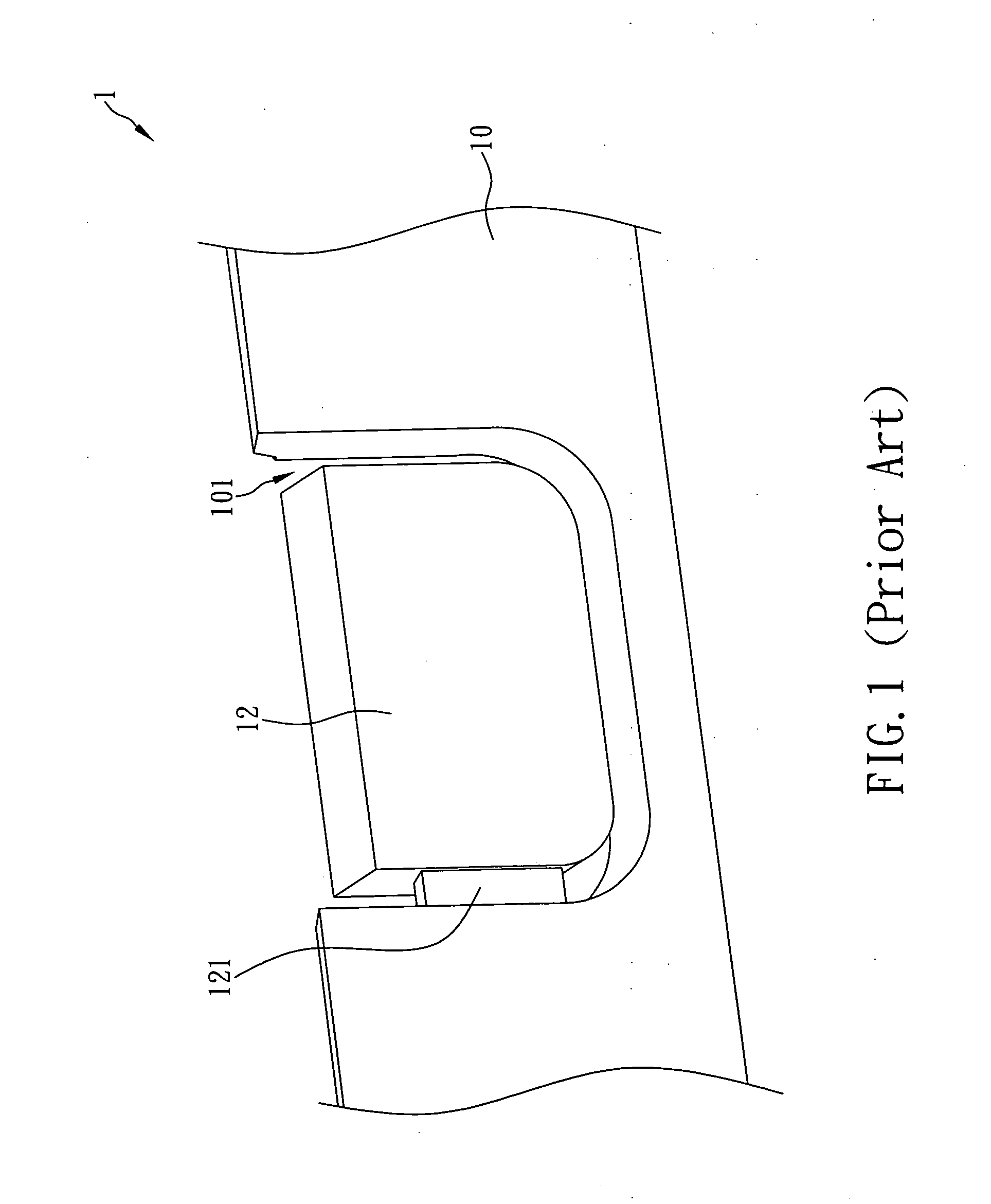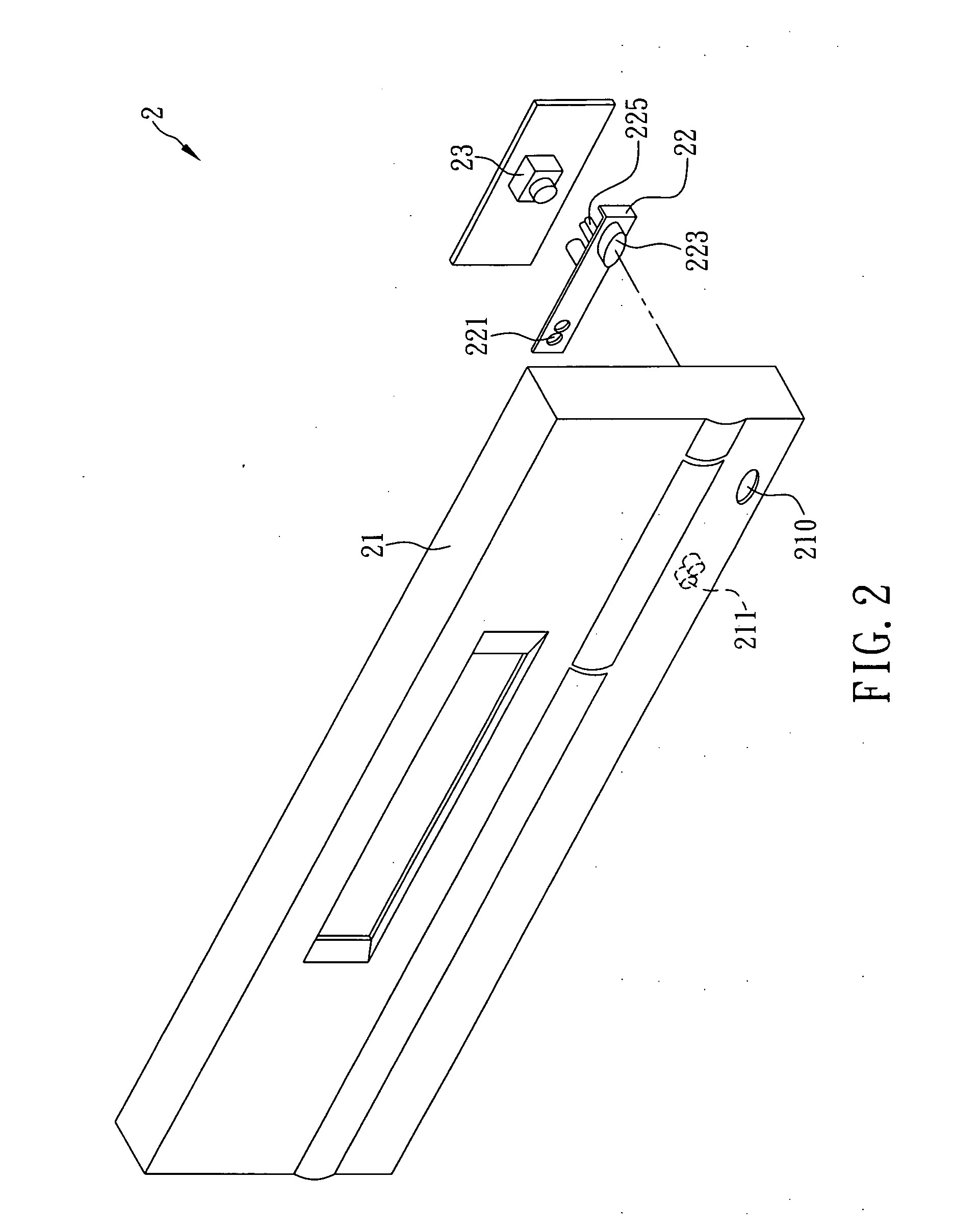Push button structure with curved lever
a push button and lever technology, applied in the field of push button structure, can solve the problems of low yield rate, low sensitivity, compromising durability, etc., and achieve the effect of increasing the yield ra
- Summary
- Abstract
- Description
- Claims
- Application Information
AI Technical Summary
Benefits of technology
Problems solved by technology
Method used
Image
Examples
Embodiment Construction
[0015]The present invention provides a push button structure with a curved lever. Referring to FIG. 3 for a preferred embodiment of the present invention, the push button structure 3 is applied to an electronic device (not shown) and includes a casing 31 and a button body 33. The casing 31 and the button body 33 are formed as a single unit by injection molding. In order to facilitate understanding of the technical features of the present invention, the upper right corner of FIG. 3 is defined as the outside of the casing 31 (and hence of the electronic device), and the lower left corner of FIG. 3 as the inside of the casing 31 (and hence of the electronic device).
[0016]As shown in FIG. 3, the casing 31 has an opening 310 that extends through the surface of the casing 31. The button body 33 corresponds in shape to the opening 310 and is formed within the opening 310. The outer surface of the button body 33 is exposed on the surface of the casing 31 so as to be pressed by the user. The...
PUM
 Login to View More
Login to View More Abstract
Description
Claims
Application Information
 Login to View More
Login to View More - R&D
- Intellectual Property
- Life Sciences
- Materials
- Tech Scout
- Unparalleled Data Quality
- Higher Quality Content
- 60% Fewer Hallucinations
Browse by: Latest US Patents, China's latest patents, Technical Efficacy Thesaurus, Application Domain, Technology Topic, Popular Technical Reports.
© 2025 PatSnap. All rights reserved.Legal|Privacy policy|Modern Slavery Act Transparency Statement|Sitemap|About US| Contact US: help@patsnap.com



